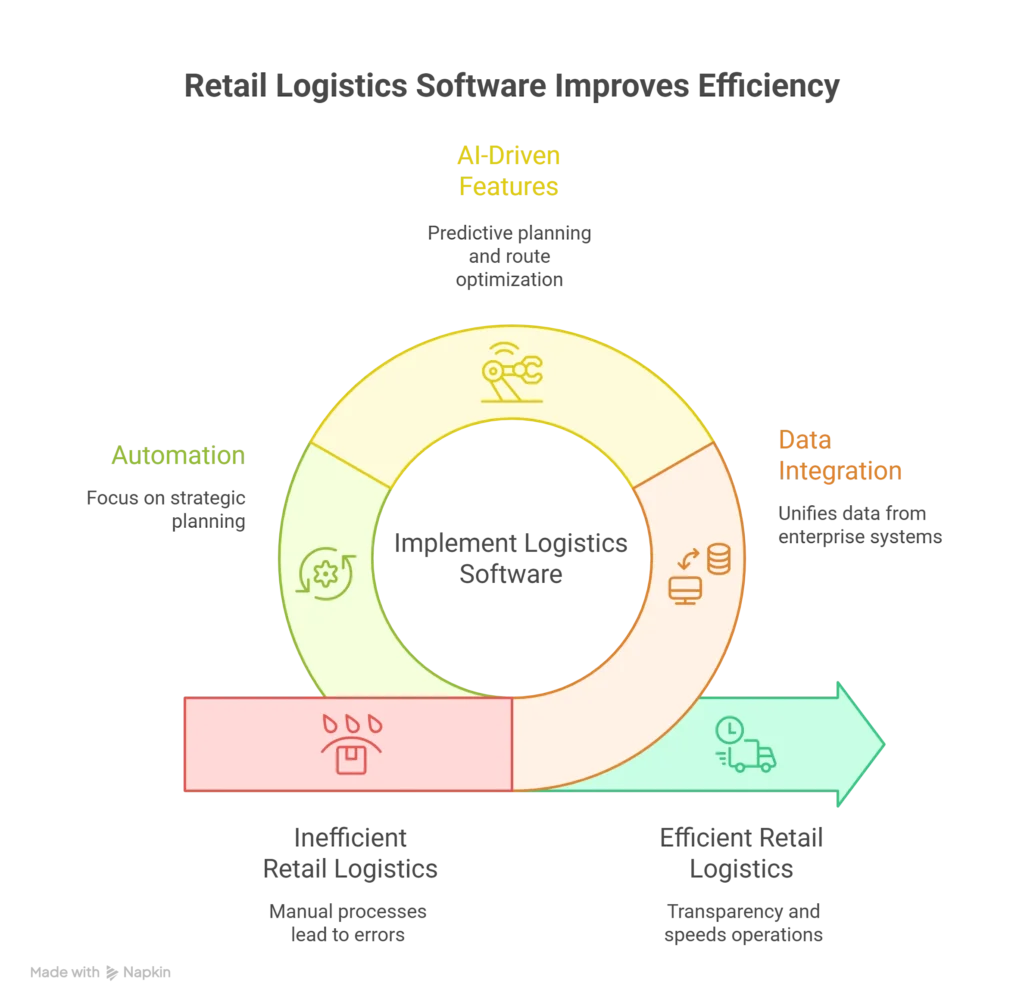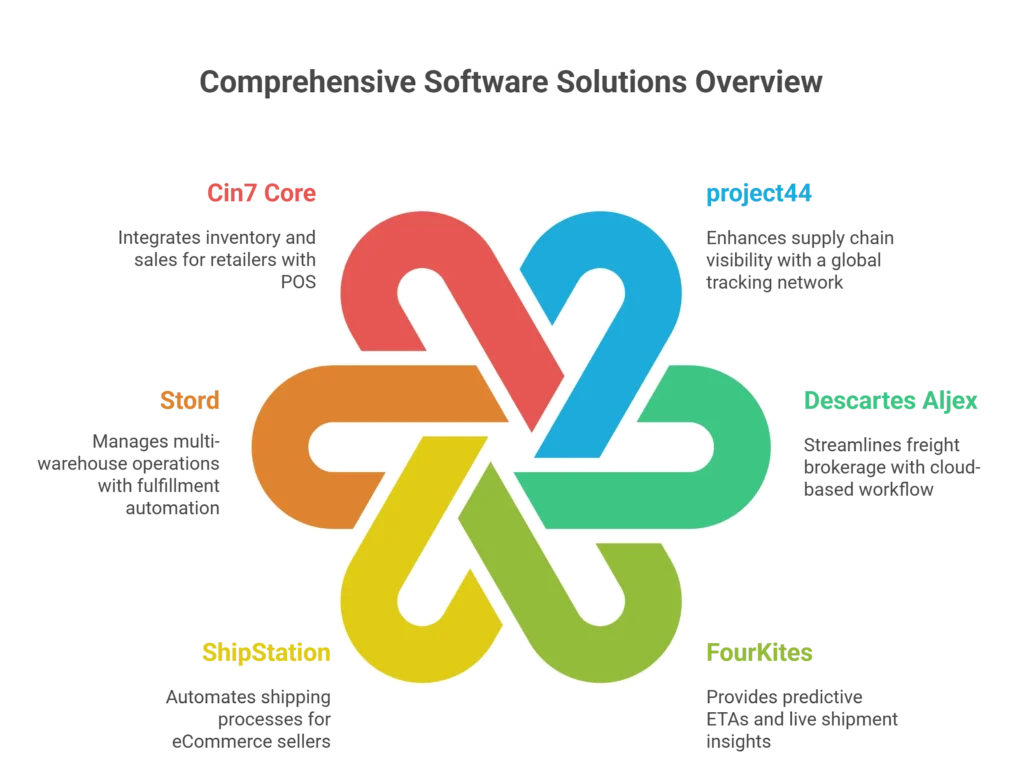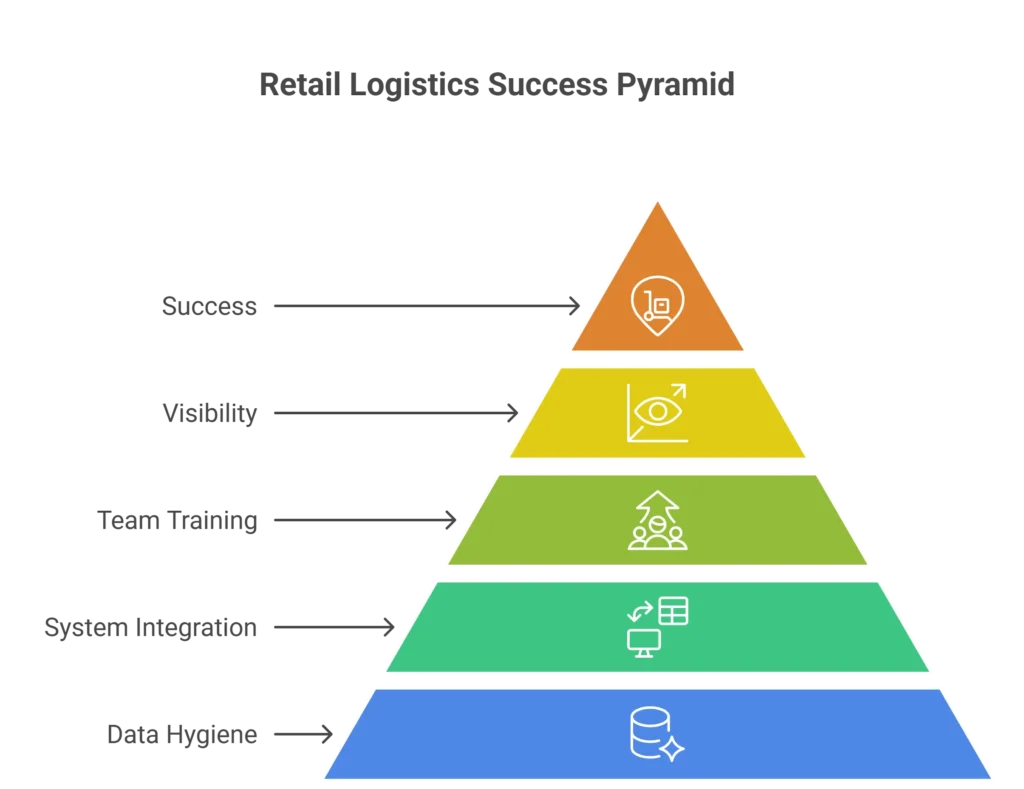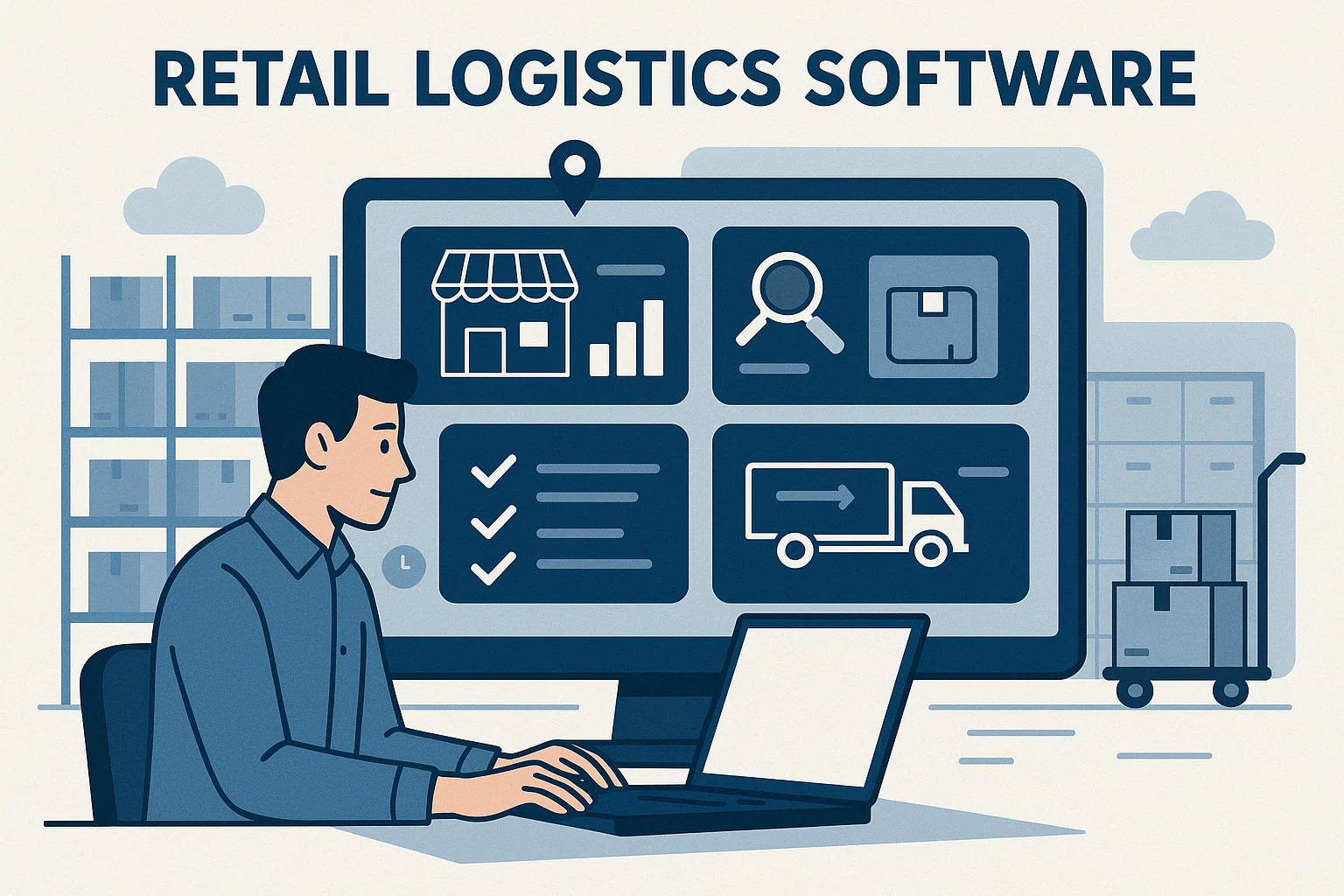Table of Contents
Retail Logistics Software is reshaping how retailers manage supply chains, track inventory, and fulfill orders in 2025. The global logistics management software market is projected to hit $13.46 billion in 2025, growing from $12.19 billion in 2024 at a CAGR of 10.4% as retailers expand omnichannel sales and real-time visibility becomes essential.
Meanwhile, the broader supply chain management software market is valued at USD 33.39 billion in 2025, set for strong growth through 2030, underscoring the strategic role these tools play across multiple functions.
Retailers face complex demands on-time fulfillment, multi-channel inventory, and rising customer expectations, all requiring software that unifies data across warehouse, transportation, and order systems. Retail Logistics Software blends transportation management, warehouse insights, and supply network planning into one platform. Early adopters report up to 25 % reductions in logistics costs and 15 % better route efficiencies by leveraging AI and automation.
In this article, we break down how Retail Logistics Software powers modern retail operations, the key features driving performance, leading products in 2025, cost structures, and practical ROI data. The goal is to help logistics leaders make data-driven choices that improve delivery speed, lower costs, and strengthen competitive advantage.
Why Retail Logistics Software Matters in 2025

Retail Logistics Software drives efficiency improvements across inventory, transportation, and delivery operations. The market’s growth reflects its strategic value; logistics management software alone is worth $13.46 billion in 2025 as retailers demand real-time data and automation.
Retailers face increasing pressure from consumers demanding faster deliveries and full visibility from order to doorstep. Without software that unifies data, manual processes lead to errors, stockouts, and delayed shipments. Retail Logistics Software integrates data from enterprise systems like ERP, WMS, and OMS, eliminating silos and accelerating decision-making across functions.
AI-driven features such as predictive planning and route optimization are now standard. Retailers using advanced systems report reducing empty miles by up to 15 %, cutting fuel costs, and improving margins.
This automation helps logistics teams focus on exception handling and strategic planning instead of manual tracking. In the competitive retail landscape of 2025, software that increases transparency and speeds operations is no longer optional; it’s foundational.
Core Features of Retail Logistics Software
Retail Logistics Software should deliver real-time visibility, automation, and predictive insights. These features separate basic tools from strategic solutions.
Real-Time Visibility and Tracking
Visibility across warehouses and transportation networks lets managers make decisions without delays. Retailers with full visibility recover from supply disruptions much faster and avoid costly delays. Software dashboards show live inventory levels, shipment status, and delivery windows. This reduces guesswork and aligns teams on performance metrics.
Transportation and Route Optimization
Modern systems embed AI heuristics to optimize routes based on traffic, delivery windows, and fuel costs. Retailers integrating these capabilities see route efficiencies improve by up to 15 %, directly lowering operating expenses.
Inventory Synchronization and Demand Forecasting
Software that ties inventory levels to demand forecasting prevents stockouts and overstocks. By modeling sales patterns and trends, retailers can allocate products where they’re needed most, reducing working capital tied up in excess stock.
Retail Logistics Software must also support returns processing and reverse logistics—areas that significantly impact customer satisfaction and total cost of operations.
Leading Retail Logistics Software Platforms (2025)
| Software | Primary Strength | Best For | Notable Feature |
|---|---|---|---|
| project44 | Supply Chain Visibility | Global enterprises | Real-time tracking network |
| Descartes Aljex | TMS & Brokerage | Freight brokers | Cloud-based freight workflow |
| FourKites | Predictive ETA | Shippers/post-sales | Live shipment insights |
| ShipStation | Shipping automation | eCommerce sellers | Multi-channel integrations |
| Stord | OMS + WMS | Multi-warehouses | Fulfillment automation |
| Cin7 Core | Inventory Control | Retailers with POS | Unified inventory and sales |

Implementation Costs and Pricing Benchmarks
Retail Logistics Software pricing varies by deployment model, functionality, and scale. Cloud solutions are the dominant choice in 2025 due to scalability and lower upfront costs.
Typical pricing structures include:
• Subscription (SaaS): $150 to $2,000+ per user per month, depending on modules and analytics depth.
• Tiered Annual Licensing: $50,000 to $500,000+ for enterprise-wide agreements.
• Implementation Fees: 20 %–40 % of annual subscription for setup, integrations, and training.
Cloud deployments reduce hardware and maintenance costs. Vendors also offer ROI guarantees based on performance metrics like transportation savings and inventory days reduction. Early adopters report payback periods as short as 9–12 months thanks to labor savings and forecasting improvements.
Best Practices for Retail Logistics Software Deployment
To maximize value from Retail Logistics Software, follow these best practices:
1. Start with data hygiene. Clean inventory and order data before migration to avoid errors in automated workflows.
2. Integrate existing systems. Linking ERP, OMS, and warehouse tools ensures a single source of truth.
3. Train teams early. Change management reduces resistance and accelerates adoption.
4. Prioritize visibility. Real-time dashboards uncover bottlenecks before they escalate.
Success in 2025 relies on systems that break down silos and empower teams with timely data. Well-executed deployments drive measurable improvements in service levels and cost control.

Bottom Line
Retail Logistics Software is a strategic investment for retailers in 2025. The software market’s growth, driven by real-time tracking, automation, and predictive analytics, reflects a shift toward data-driven logistics operations. By integrating transportation management, inventory synchronization, and visibility tools, retailers can cut costs, minimize errors, and meet rising customer expectations. The right platform aligns with your key priorities, whether it’s reducing delivery times, optimizing inventory, or enhancing visibility.
Disclaimer:
Information in this article is for general guidance only. Logistics data and market figures may change without notice.


